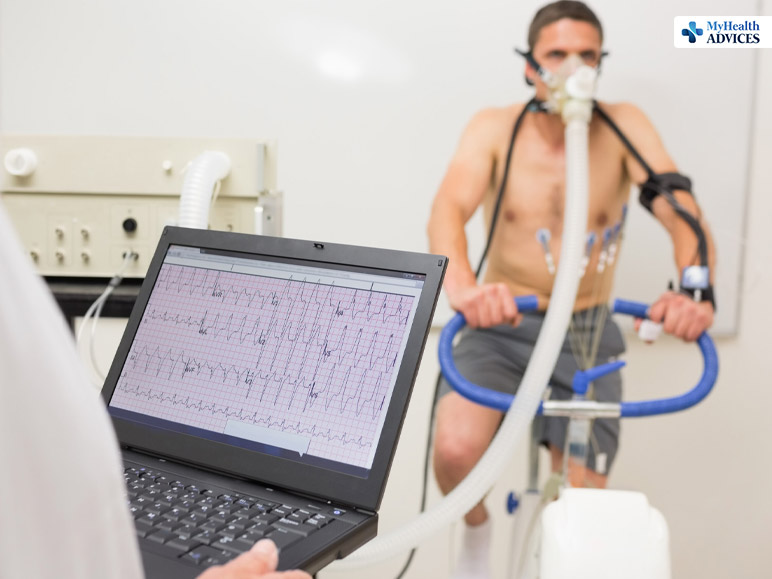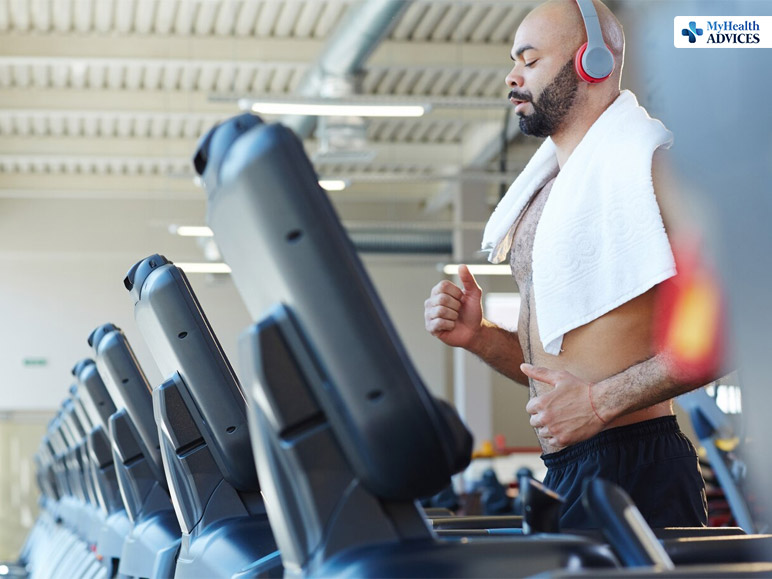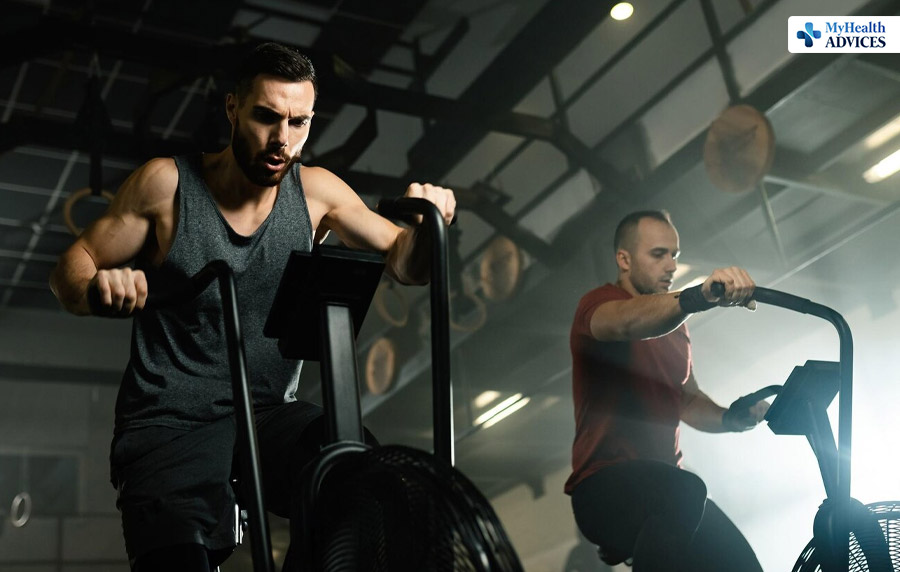Answer: Bicycling
Explanation
The answer of Cardiorespiratory fitness is most likely to improve due to which of the following types of exercise is bicycling. Cardiorespiratory endurance stands as a vital part of an individual’s overall physical well-being. It serves as a screening test for how effectively the heart, lungs, and muscles perform under the rigors of moderate- to high-intensity exercise.
Raising one’s cardiorespiratory endurance not only enhances oxygen uptake in the lungs and heart but also enables an individual to sustain physical activity over longer durations.
This physical fitness is also known by alternative names, including cardiovascular fitness, cardiovascular endurance, and cardiorespiratory fitness.
Building Cardiorespiratory Endurance

Essentially, cardiorespiratory endurance defines the body’s capacity to endure prolonged periods of physical exertion. Individuals built with high levels of cardiorespiratory endurance exhibit the ability to engage in high-intensity activities for long periods without losing fatigue.
The test of cardiorespiratory endurance depends on examining the efficiency of the body’s ability to absorb and use oxygen.
With each breath, the lungs become filled with air, and a portion of their oxygen content flows into the bloodstream. Subsequently, this oxygen-enriched blood journeys to the heart, which dutifully disseminates it to the tissues and organs begging for food.
Muscles, in particular, demand an adequate supply of oxygen and other vital nutrients for seamless operation during bouts of high-intensity or prolonged exercise. When this nutritional supply is compromised, the resultant buildup of waste products precipitates fatigue. Thus, an individual’s level of cardiorespiratory endurance bears a direct correlation to their physical performance.
Calculating Cardiorespiratory Endurance

You know bicycling is the answer to cardiorespiratory fitness is most likely to improve due to which of the following types of exercise?
Various tests have been devised to quantify cardiorespiratory endurance.
Metabolic Equivalents (METs): This metric delineates the ratio between energy expended during physical activity and energy expended at rest. Determining an individual’s MET entails gauging the oxygen their body consumes in a state of rest.
Maximum Oxygen Uptake (VO2 Max) Test: This evaluative tool discerns the utmost quantity of oxygen the body can harness during instances of high-intensity exertion, such as sprinting or cycling.
Typically, the VO2 max test involves subjecting the individual to a rigorous regimen on a treadmill or stationary bike. Concurrently, the person wears a chest strap or analogous apparatus to monitor heart rate, along with a face mask for gauging oxygen consumption.
Significance of Cardiorespiratory Endurance

The import of cardiorespiratory endurance extends far beyond the realm of professional athletes, offering tangible benefits to individuals across diverse spectra. A heightened level of cardiorespiratory endurance invariably translates to a prolonged capacity for high-intensity exercise.
Bicycling is the answer to cardiorespiratory fitness is most likely to improve due to which of the following types of exercise? This is especially pertinent for individuals pursuing weight loss goals, as higher-intensity aerobic activities lead to a more substantial caloric burn.
Moreover, scientific inquiries have unveiled additional dividends associated with augmented cardiorespiratory endurance:
- A 2017 study posits that individuals boasting superior cardiorespiratory endurance are less susceptible to developing high blood pressure than their counterparts with diminished endurance.
- In a 2015 investigation, researchers unearthed a positive correlation between cardiorespiratory endurance and multitasking performance in adults ranging from 59 to 80 years of age.
- Findings from another 2015 study suggest that refining cardiorespiratory endurance may diminish the risk of coronary heart disease and all-cause mortality.
Enhancing Cardiorespiratory Endurance: A Proactive Endeavor

Individuals can promote the improvement of their cardiorespiratory endurance through consistent engagement in exercise. A 2019 study shows the success of resistance training, endurance training, and high-intensity interval training in improving both cardiorespiratory endurance and muscular strength among individuals aged 40–65 who were previously sedentary.
In a parallel direction, a 2017 investigation scrutinized the impact of a 12-week cross-circuit training program on students characterized by excess weight and intellectual disabilities. Encouragingly, adherents of the training regimen exhibited improvements in exercise endurance, muscle strength, and body mass index.
A variety of exercises serve as invaluable tools for building cardiorespiratory endurance while also fostering muscular development and calorie expenditure. These exercises may be executed in sets of 10–15 repetitions or, alternatively, for as many repetitions as feasible within a 1-minute timeframe, interspersed with a 20-second respite.
Cardiorespiratory Fitness Exercises Include

Maybe bicycling is the correct option for cardiorespiratory fitness is most likely to improve due to which of the following types of exercise? Are there any other exercise options? Here are the other exercise options.
Jumping Jacks: Initiate by assuming an upright stance, feet together, and arms aligned with the body. Propel upward, simultaneously parting the legs and extending the arms overhead. Upon descent, revert to the initial position.
Burpees: Commence in a standing posture, feet shoulder-width apart. Proceed to squat, palms flat on the floor. Then, extend the legs into a push-up position. Realign the legs to reenter a squat and explosively launch into the air with arms raised, before reverting to the squat position upon landing.
Mountain Climbers (Running Planks): Assume the plank position with shoulders over wrists and legs extended. Engage the core. Alternately, draw the knees toward the chest in a running motion.
Side-Shuffle Touches: Start from a standing position, feet shoulder-width apart, arms at the sides. Descend into a squat and shuffle to the right, touching the floor outside the right foot. Repeat the maneuver in the opposite direction.
These exercises, complemented by aerobic pursuits such as running, power walking, swimming, dancing, jump rope, and high-intensity sports like basketball and soccer, collectively constitute a robust regimen for refining cardiorespiratory fitness.
In Summation

Guess you get the idea that cardiorespiratory fitness is most likely to improve due to which of the following types of exercise? Cardiorespiratory endurance serves as a pivotal gauge of how adeptly the heart, lungs, and muscles function under the duress of moderate-to-high-intensity physical activity. Regular engagement in physical activities, particularly aerobic exercises, can yield substantial improvements in cardiorespiratory endurance. This, in turn, culminates in heightened heart and lung health, along with an enhanced capacity for oxygen circulation and utilization.
As such, the cultivation of cardiorespiratory endurance emerges as an indomitable stride toward overall well-being and vitality.
Additional:
- What Is Scope Mouth Wash?
- Aromatherapy: Uses, Benefits, And Risks
- Asthma: Signs, Symptoms, Causes, Prevention


